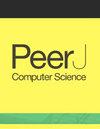利用多目标优化加强传染病预测模型选择:实证研究
IF 3.5
4区 计算机科学
Q2 COMPUTER SCIENCE, ARTIFICIAL INTELLIGENCE
引用次数: 0
摘要
随着大流行病不断给全球公共卫生带来挑战,开发有效的预测模型已成为一个紧迫的研究课题。本研究旨在探索多目标优化方法在选择传染病预测模型中的应用,并评估其对提高预测准确性、普适性和计算效率的影响。本研究采用 NSGA-II 算法,比较了多目标优化与传统单目标优化所选择的模型。结果表明,通过多目标优化方法选择的决策树(DT)和极梯度提升回归模型(XGBoost)在准确性、泛化能力和计算效率方面都优于其他方法选择的模型。与通过单目标优化方法选择的脊回归模型相比,决策树(DT)和 XGBoost 模型在实际数据集上的均方根误差(RMSE)明显更低。这一发现凸显了多目标优化在平衡多个评价指标方面的潜在优势。不过,本研究的局限性也提出了未来的研究方向,包括改进算法、扩展评价指标以及使用更多样化的数据集。本研究的结论强调了多目标优化方法在公共卫生决策支持系统中的理论和实践意义,表明其在选择预测模型方面具有广泛的应用潜力。本文章由计算机程序翻译,如有差异,请以英文原文为准。
Enhancing infectious disease prediction model selection with multi-objective optimization: an empirical study
As the pandemic continues to pose challenges to global public health, developing effective predictive models has become an urgent research topic. This study aims to explore the application of multi-objective optimization methods in selecting infectious disease prediction models and evaluate their impact on improving prediction accuracy, generalizability, and computational efficiency. In this study, the NSGA-II algorithm was used to compare models selected by multi-objective optimization with those selected by traditional single-objective optimization. The results indicate that decision tree (DT) and extreme gradient boosting regressor (XGBoost) models selected through multi-objective optimization methods outperform those selected by other methods in terms of accuracy, generalizability, and computational efficiency. Compared to the ridge regression model selected through single-objective optimization methods, the decision tree (DT) and XGBoost models demonstrate significantly lower root mean square error (RMSE) on real datasets. This finding highlights the potential advantages of multi-objective optimization in balancing multiple evaluation metrics. However, this study’s limitations suggest future research directions, including algorithm improvements, expanded evaluation metrics, and the use of more diverse datasets. The conclusions of this study emphasize the theoretical and practical significance of multi-objective optimization methods in public health decision support systems, indicating their wide-ranging potential applications in selecting predictive models.
求助全文
通过发布文献求助,成功后即可免费获取论文全文。
去求助
来源期刊

PeerJ Computer Science
Computer Science-General Computer Science
CiteScore
6.10
自引率
5.30%
发文量
332
审稿时长
10 weeks
期刊介绍:
PeerJ Computer Science is the new open access journal covering all subject areas in computer science, with the backing of a prestigious advisory board and more than 300 academic editors.
 求助内容:
求助内容: 应助结果提醒方式:
应助结果提醒方式:


